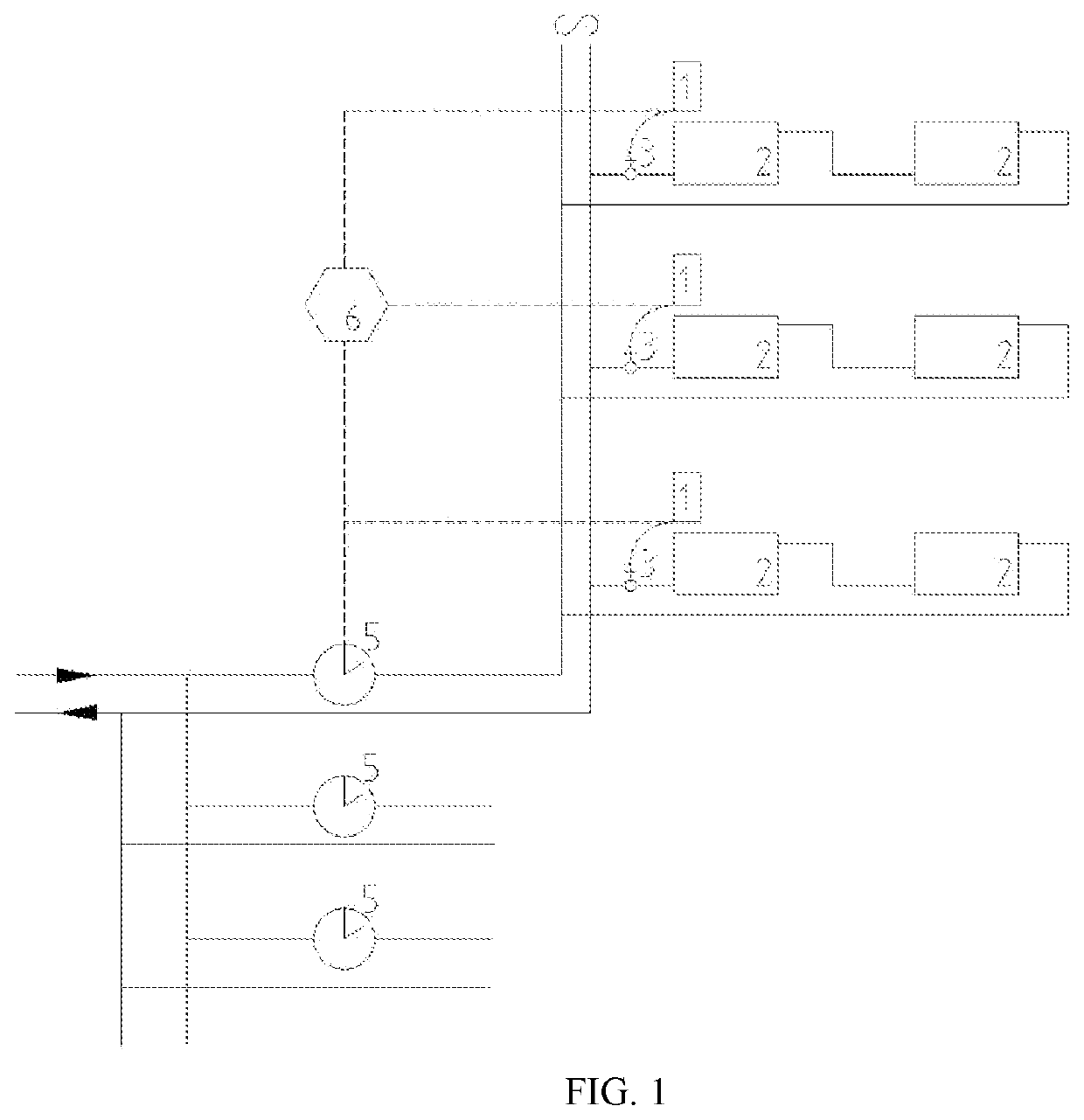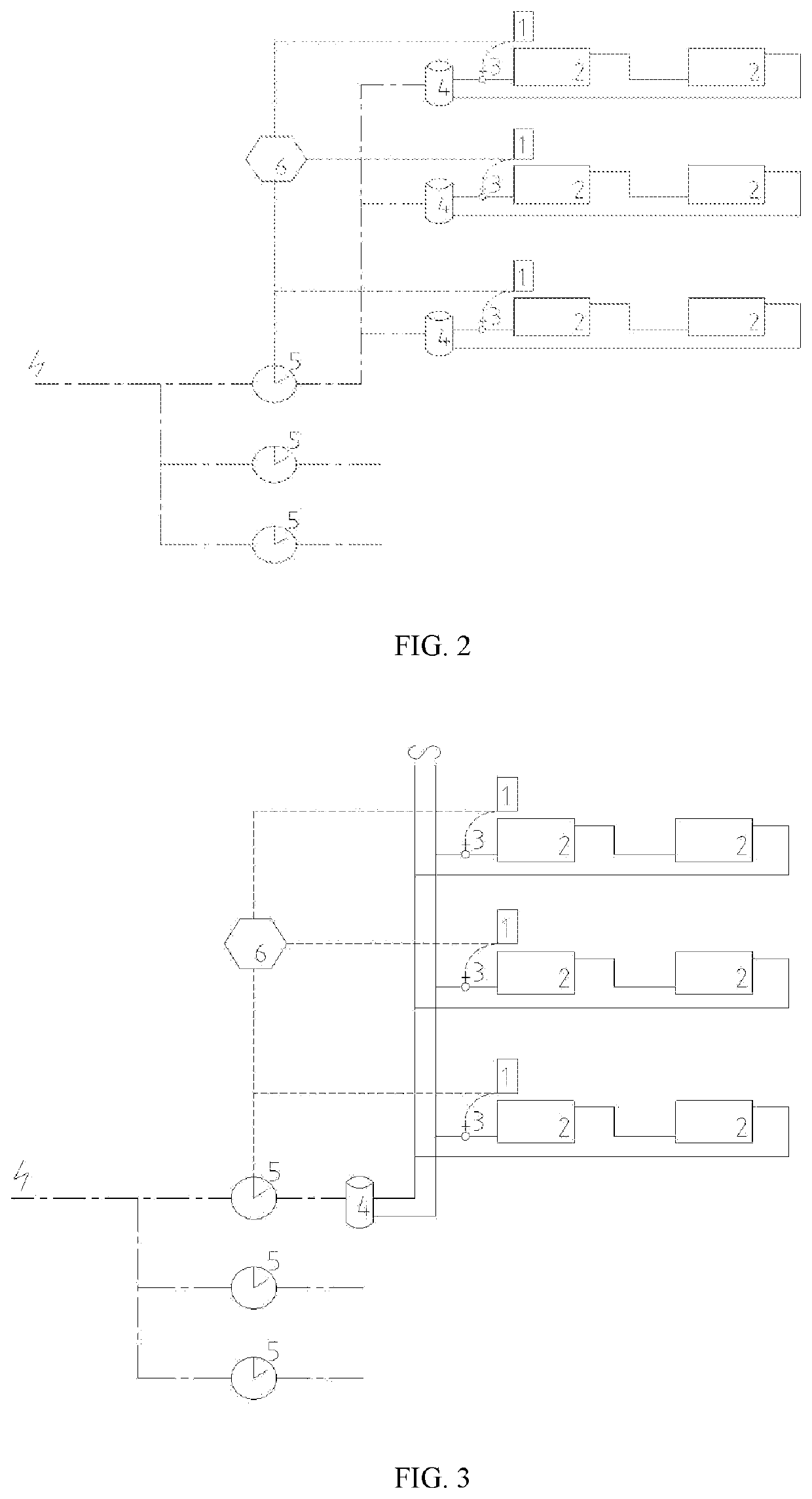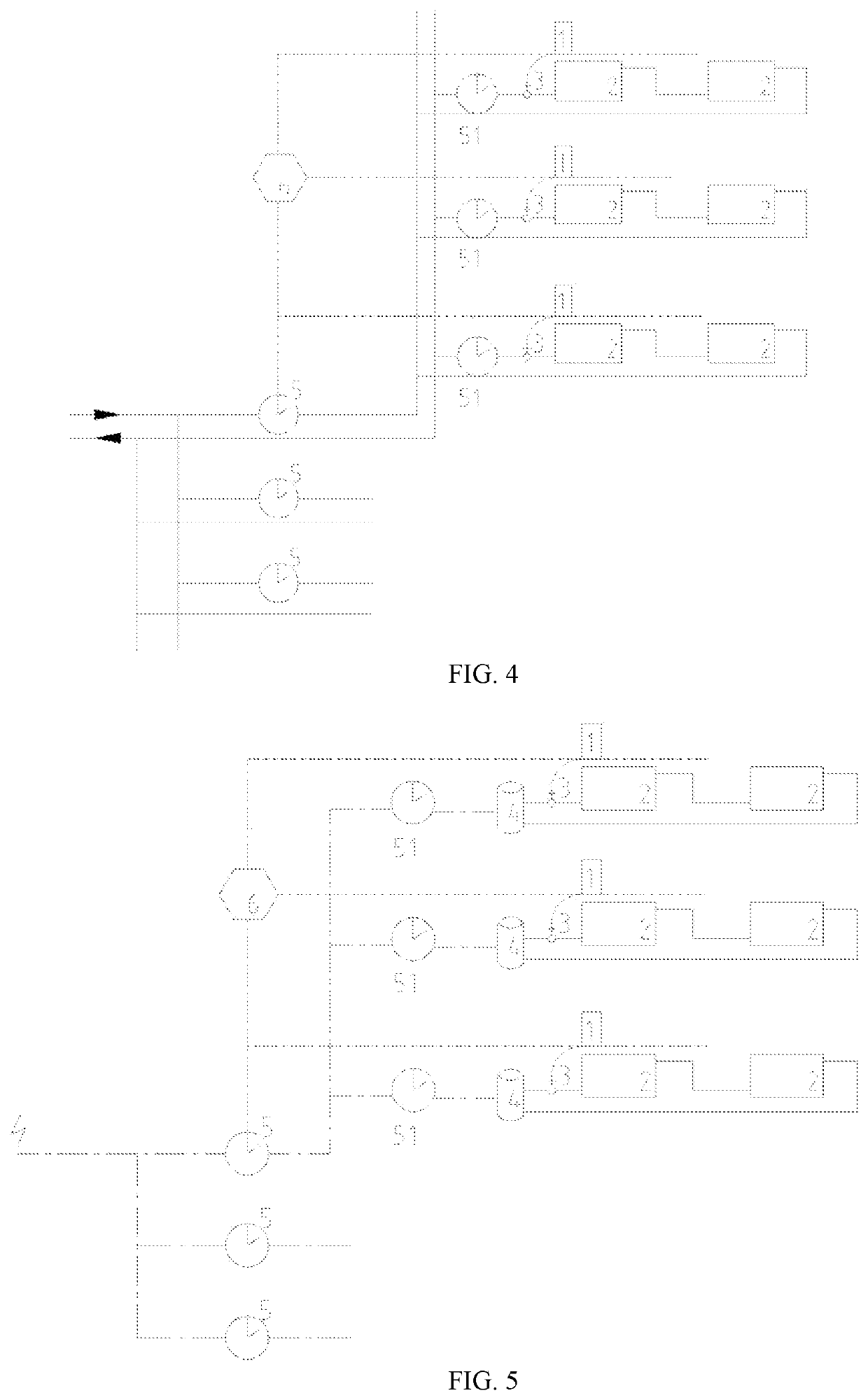Metering and Distribution Device and Method Based on a Matching Coefficient
- Summary
- Abstract
- Description
- Claims
- Application Information
AI Technical Summary
Benefits of technology
Problems solved by technology
Method used
Image
Examples
Embodiment Construction
[0103]The multiple preferred embodiments of the present invention are described by referring to the accompanying drawings of the disclosure so as to make the technical contents more clear and easy to understand. The present invention can be embodied by many different forms of embodiments, and the protection scope of the present invention is not limited to the embodiments mentioned herein.
[0104]1. In the on-off time area method, the ratio of the radiating equipment power to the design heat load is required to be well matched, that is, the radiating equipment power is required to be equal to the design heat load. In the present invention, the matching coefficient is 1, but in practical application, the radiating equipment power is not equal to the design heat load for various reasons, resulting in metering errors and impossibility to use the on-off time area method. The present invention provides a general technical solution of metering and distribution based on a matching coefficient...
PUM
 Login to View More
Login to View More Abstract
Description
Claims
Application Information
 Login to View More
Login to View More - R&D
- Intellectual Property
- Life Sciences
- Materials
- Tech Scout
- Unparalleled Data Quality
- Higher Quality Content
- 60% Fewer Hallucinations
Browse by: Latest US Patents, China's latest patents, Technical Efficacy Thesaurus, Application Domain, Technology Topic, Popular Technical Reports.
© 2025 PatSnap. All rights reserved.Legal|Privacy policy|Modern Slavery Act Transparency Statement|Sitemap|About US| Contact US: help@patsnap.com



